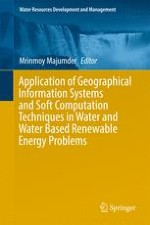2018 | OriginalPaper | Chapter
4. Development of Financial Liability Index for Hydropower Plant with MCDM and Neuro-genetic Models
Authors : Priyanka Majumder, Apu Kumar Saha
Publisher: Springer Singapore
Activate our intelligent search to find suitable subject content or patents.
Select sections of text to find matching patents with Artificial Intelligence. powered by
Select sections of text to find additional relevant content using AI-assisted search. powered by
